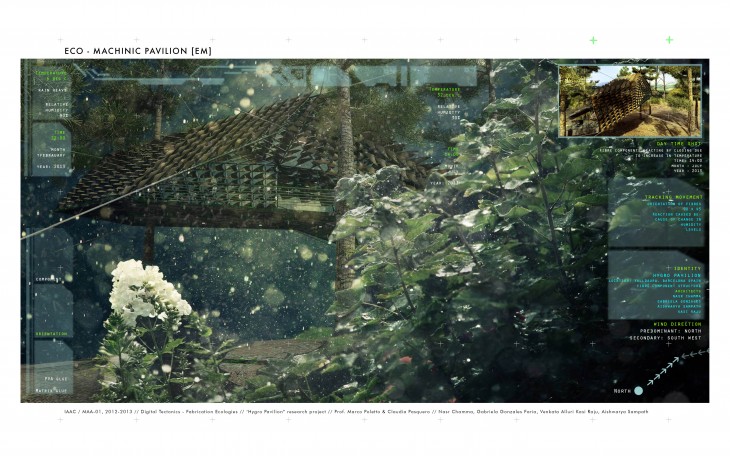Home
Microbial Ecologies (ME) is proposing a speculative scenario in which is able to explore new robotic fabrication processes as a framework for investigating the generation of (bio)artificial systems. These systems allow us to regenerate and protect the soil erosion and encourage healthy plant growth using interconnected 3D fiber systems. The research aims to explore a heterogeneity of fiber structures at a broad range of spatial scales. The heterogeneity and interconnectivity of the 3D fiber system within soil makes it a biodiverse microhabitat for the diverse microbial population and vegetal systems. The system that ME is proposing has a pivotal role in microbial interactions, therefore It is able to amplify the biodiversity of ecosystems.
Microbial Ecologies focuses on the development of fiber structures to characterize soil at multiples scales that are relevant for micro organisms.
Stigmergic Fibers tackles the prospect of fiber aggregation under the influence of varying environmental and material properties, to produce controlled boundary and spatial conditions. The project was initiated by research on plant fiber and biology. To extract information from the behavioral methodologies of plant growth and structure, various experiments were conducted on differentiated growing conditions.
By means of air pressure we separate individual fibers from a spool of roving, that when sprayed at a specific arrangement of obstacle in a certain manner. This created conditioned and repeatable aggregation patterns of the fibers. A water based adhesive was added to this process in order to increase surface tension between the fibers and produce longer spanning fibrous connections and surfaces. Thus, allowing us to scale up our prototypes in an effort to produce on-site an ephemeral architectural habitat that would merge natural phenomenon with robotic fabrication.
With the focus within the design community towards green technology; there has been an emergence of bio- composites. Some make the statement that bio-composites work better than standard composites. Hemp posses a great fiber that should be utilized within bio-composites. The branches of hemp, with their hollow core, work exceptionally well at retaining resin thus creating a more solid material. Focusing towards the innovative properties involving bio-composites we have discovered our thesis. How can we manipulate the fiber properties of hemp through branching?
With a relatively short growth cycle of 120 days and the ability to be planted densely at a rate of 3 to 5 hundred plants per square meter hemp has great potential to become a cash crop. Hemp is a plant that has a wide range of uses. In fact, “cannabis sativa” means “useful” (sativa) “hemp” (cannabis). The plant is very tall; ranging in height from 1.8 to 4.8 meters with majority of each hemp plant being comprised of a thin stalk, with no natural branches, and relatively few leaves. How can we train a plant that wants to grow straight up with no branches?
Research project final presentation > Hemp component that reacts to humidity, without the help of any external source of energy or mechanism, applied to Eco-machinic Pavilion, located in IAAC campus, Valldaura-Barcelona.